CAN YOU HELP US?We are URGENTLY seeking one or more gas safety experts * to provide expertise to ANEC on gas safety issues and the prevention of carbon monoxide (CO) poisoning * to represent the collective European consumer voice in standardisation work on household gas appliances, gas detectors and barbecues We offer a daily allowance for remote participation in meetings during 2022, as well as reimbursement of real costs where face-to-face participation is required (subject to the ANEC Guide on Reimbursement of Travel Expenses). For further details, please contact the ANEC Secretariat at This email address is being protected from spambots. You need JavaScript enabled to view it. as soon as possible. |
ANEC-EDF webinar: an introduction to standardisationWe are delighted to be co-hosting a webinar with the European Disability Forum (EDF) on accessibility standards for the built environment. The webinar will take place on Wednesday 14 September from 14h00 to 15h30 (CEST). The language of the webinar will be English, with international sign interpretation and real-time captioning in English. For more information and to register, go to https://bit.ly/3KurFVJ. The webinar will highlight the first European Standard on the accessibility and usability of the built environment (EN 17210:2021), including its related technical reports; as well as the standard EN 81-70 on the accessibility of lifts, including to persons with disability. ANEC and EDF both contributed to the development of the standards. Join us to learn about these standards, how you can use them to press for accessibility of the built environment, and how you can become involved in the standardisation process. |
Horizontal
Revision of the Standardisation Regulation
In mid-July, Compromise Amendments for a limited revision of Regulation (EU) 1025/2012 (the Standardisation Regulation), were agreed by the Internal Market & Consumer Protection Committee (IMCO) of the European Parliament (EP) (https://bit.ly/3PE50rl)
The revision intends to limit those countries voting on draft Harmonised Standards (those in support of EU policies or legislation) to only the EEA countries, although other countries may participate in the development of the standards. ANEC supported the European Commission (EC) proposal, but wanted companies and organisations having a say in the national votes to be limited similarly to those headquartered in EEA countries. Moreover, we hoped the main text would require inclusiveness of the decision-making process at national level, but this is proposed to be included in only a recital to the Regulation.
IMCO also agreed to enter inter-institutional negotiations with the Council and EC.
The next step of the procedure will be a vote in a plenary session of the EP.
Link to IMCO press release: https://bit.ly/3B4m9WY.
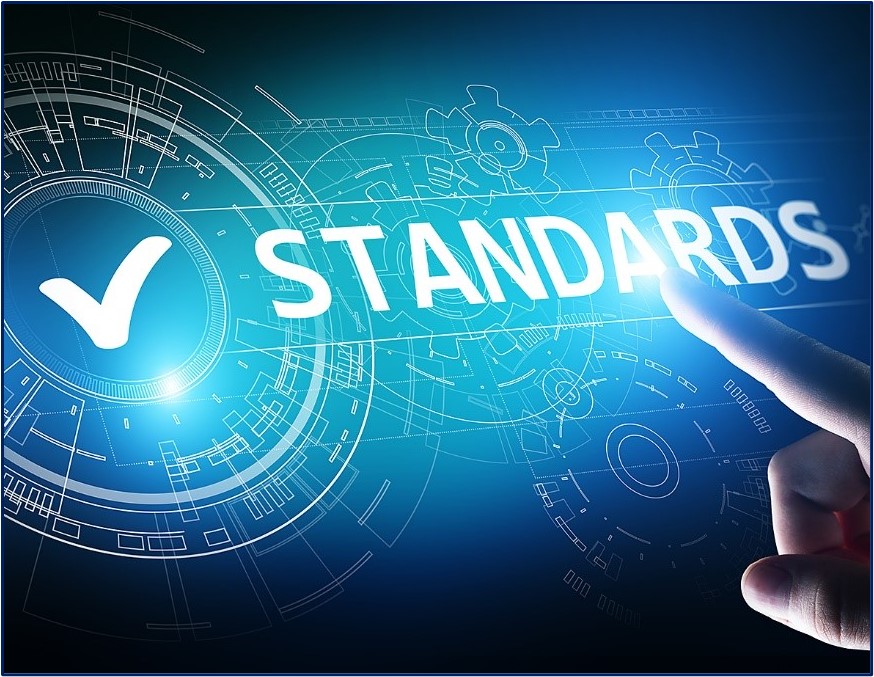
Community face-coverings
ANEC welcomes the adoption of CEN/TS 17553 ‘Community face-coverings — Requirements, methods of testing, and instructions for use’. We were influential in the work.
ANEC submitted a Favourable Opinion, supporting the adoption of the Technical Specification, as its text reflected our proposals. The TS stipulates that community face-coverings are not suitable for children under 4 years of age due to risk of suffocation. Its requirements are also applicable to face-coverings that feature a transparent window, allowing the wearer's mouth and facial expressions to be seen, in order to aid facial recognition and lip reading for persons with hearing impairments.
CEN/TS 17553 will supersede CWA 17553:2020.
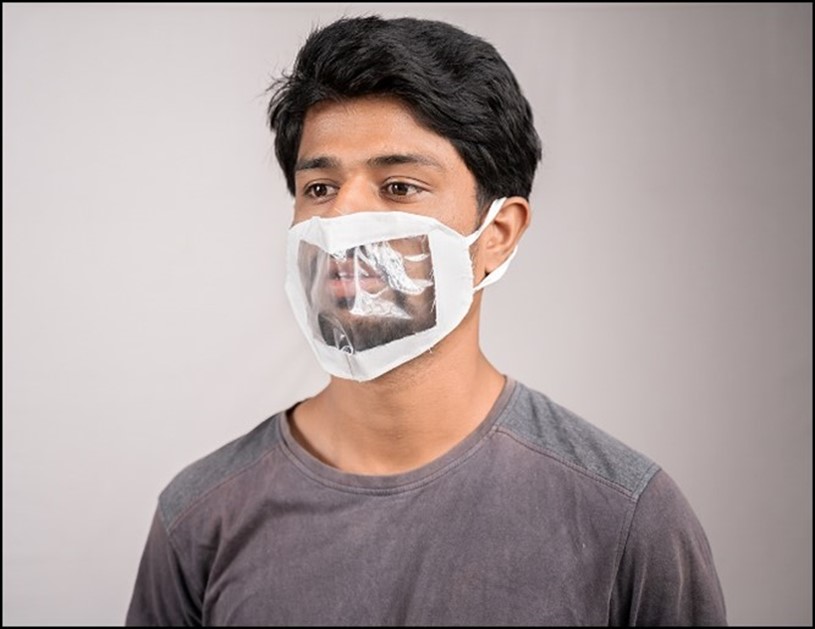
Market surveillance actions – CASP 2021 closing event
ANEC joined the CASP 2021 closing event on 23 June 2022. We used the event to repeat our call for a pan-European accident & injuries database in order to help determine the need for legislation and standards, and to aid their effectiveness. We communicated the results of the product-specific and hybrid activities, with information on cross-border use of CASP tools and best practice for online market surveillance, to our members and stressed the request of DG JUST request that the message be cascaded to other authorities. Details of CASP 2021 and its results can be found on the EC website (https://bit.ly/3Kzkqf5).
ANEC participated as a stakeholder in the product-specific actions on Electric toys; Toys from non-EU web-shops; Child care articles – Reclined cradles & baby swings; Personal protective equipment – Helmets & high visibility clothing; e-cigarettes & accessories; child appealing & food imitating products’, and pressed the following points:
- the role of online marketplaces must be acknowledged, with their status and obligations being those of importers to make sure they can be held liable for product safety violations;
- CE marking is not a marking for consumers, is not a safety mark, and should be removed from the product or its packaging and put in the technical file of the product;
- risk assessment needs to be consistent;
- it is important the results of market surveillance actions, such as CASP, are presented to the ESOs and that a discussion is held. Simply conveying the results is insufficient.

Latest EU injury statistics
EuroSafe has published latest injury statistics in its report, “Injuries in the European Union 2009-2018” (https://bit.ly/3wF3COi). The report is the eighth edition in a series of bi-annual reports, published by EuroSafe since 2006. It addresses mostly non-fatal injuries, treated in the emergency departments of hospitals. It also summarises ten years of data, 2009-2018.
More detailed information can be found through the IDB dashboard (https://bit.ly/3ATjBup) of KfV/Austria for country-specific injury profiles.

ANEC meets BIS delegation
Earlier this summer, we were pleased to be one of the parties to meet a delegation to Brussels from BIS (the Bureau of Indian Standards). We spoke about the importance of consumer representation in standardisation, and discussed ANEC’s success stories (such as the common charger for mobile devices).
The visit was organised by the EC and EFTA Secretariat (the latter hosting the meeting in its new premises) in the framework of the EU-India cooperation on standards (SESEI).
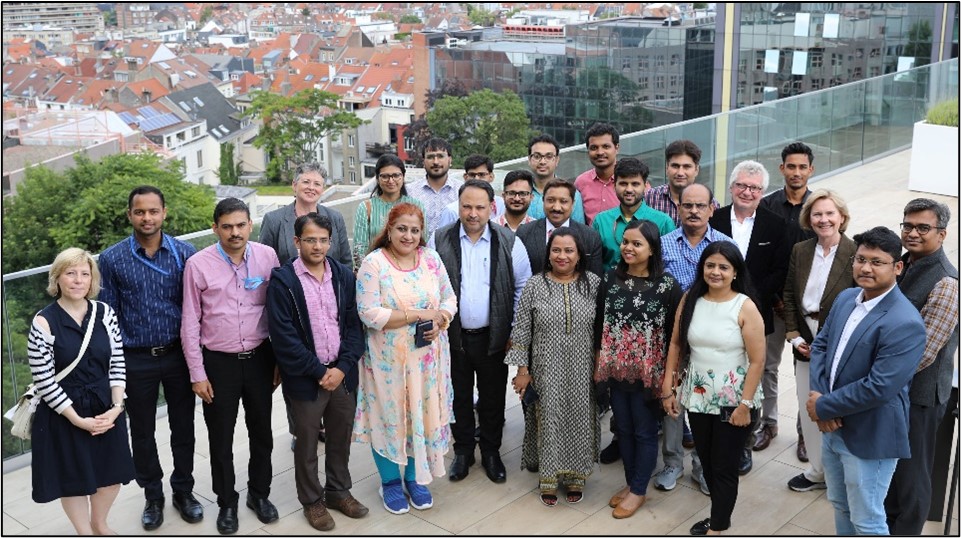
Child Safety
EC consultation on standards for children's products
On 26 August, ANEC replied to the public consultation (https://bit.ly/3ctrJZo) on the EC draft Decision setting safety requirements to be met by European standards for certain children's products. The development or revision of many standards that ANEC will follow will depend on the final text of this EC Decision. See https://bit.ly/3e6tdcu.
In our reply (https://bit.ly/3Tpxcku), we welcomed the EC draft decision as a whole, and the consideration the EC and Member States had given to our previous comments. We repeated our fundamental support for a hazard-based approach to developing safety requirements and welcomed that all relevant hazards had been identified and listed in the draft Decision.
We also welcomed the clarification in relation to existing mandates and connected products.
We appreciated the recognition that the special needs of users with disabilities - both carers and children – must be taken into account to ensure safety, and that information to draw the attention of parents and carers must be placed on the product or its packaging (meaning that such information cannot be provided in a digital way only).
We asked for the precautionary principle, and for the consideration of accident & injury data, to be reflected in the recitals of the draft Decision.
Furthermore, we highlighted that the safety requirements associated with each hazard (listed in the Annex to the draft Decision) should reflect the severity of the risks resulting from the hazard. Where there is a high probability of a hazard leading to death, or a long-term or disabling injury, the hazard should be eliminated. In situations where the severity of injury is generally less, it may be sufficient to limit the hazard.
Finally, we submitted some further comments on the Annex to the EC draft Decision in order to ensure the text not only offers the fullest clarity to regulators and enforcement authorities, but offers the highest levels of safety practicable to children.

Child Safety & Services
Trampoline parks
The draft standard, FprEN ISO 23659 ‘Sports and recreational facilities — Trampoline parks — Safety requirements’, is out for Formal Vote with a CEN deadline of 28 September. FprEN ISO 23659 has been drafted by CEN/TC 136/WG17 (in parallel work with ISO) and ANEC has been active in its development.
During the Enquiry on the draft, we submitted comments and a Not-Favourable Opinion as (the then) prEN ISO 23659 missed its goal in providing sufficient protection for children. We were concerned it would create a false sense of security for consumers who would visit the park in the expectation that risk of serious injury was minimised.
Although progress was made in the discussion of the comments received during the Enquiry, no consensus could be reached on the supervisor to user ratio. Comments received during the Enquiry included different proposals on the ratio, i.e. from 1:1, 1:8 (proposed by ANEC), 1:20, 1:25 and on to 1:32. FprEN ISO 23659 quotes only 1:32 as a (maximum) ratio. This choice of ratio is not based on evidence.
Although we welcome the progress made, we are not in a position to support the final draft because the requirement for the supervisor to user ratio is inadequate with respect to child safety. For ANEC, the role and intervention of supervisors is considered a crucial element for the safety of users, and children in particular. The ratio of supervisors to users must be of a sufficient number to guarantee the safety of all users, in different activity areas and sessions.
As it is in the interest of all stakeholders that a European standard for trampoline parks is in place, ANEC did not take a formal position on FprEN ISO 23659, but stressed the need for CEN/TC 136/WG17 to continue discussion and look to review the ratio in a future revision of the standard.
ANEC’s Technical Study on trampoline parks (https://bit.ly/3RiJ59P) was presented by one of the contractors to the EU-Safety 2022 Conference in Vienna on 23-24 June. The conference highlighted the potential of new digital solutions in the prevention of injuries to children and the elderly, as well as in sports and leisure activities and product safety. Presentations are available at https://bit.ly/3AUW64i.

Accessibility
SReq on accessibility agreed
The European Accessibility Act (Directive (EU) 2019/882), on accessibility requirements for products and services, makes use of Harmonised Standards which will have to be developed to provide presumption of conformity with the legal requirements.
The Directive will apply to various products and services (computers, e-books, self-service terminals, delivery of transport service information, including real-time travel information, consumer banking services etc.) placed on the market after 28 June 2025. By 28 June 2022, Member States were required to adopt and publish the laws, regulations and administrative provisions necessary to implement the Directive.
In 2021, the EC published a draft Standardisation Request (SReq) for Harmonised Standards to support the Accessibility Act. It was discussed by the ESOs and interested stakeholders and, with the European Disability Forum (EDF), we sent comments to the EC. We welcomed these being taken into account. The final draft SReq was approved by Member States in the Committee on Standards in July 2022.
We now call on the ESOs to accept the request and start work. ANEC will contribute.
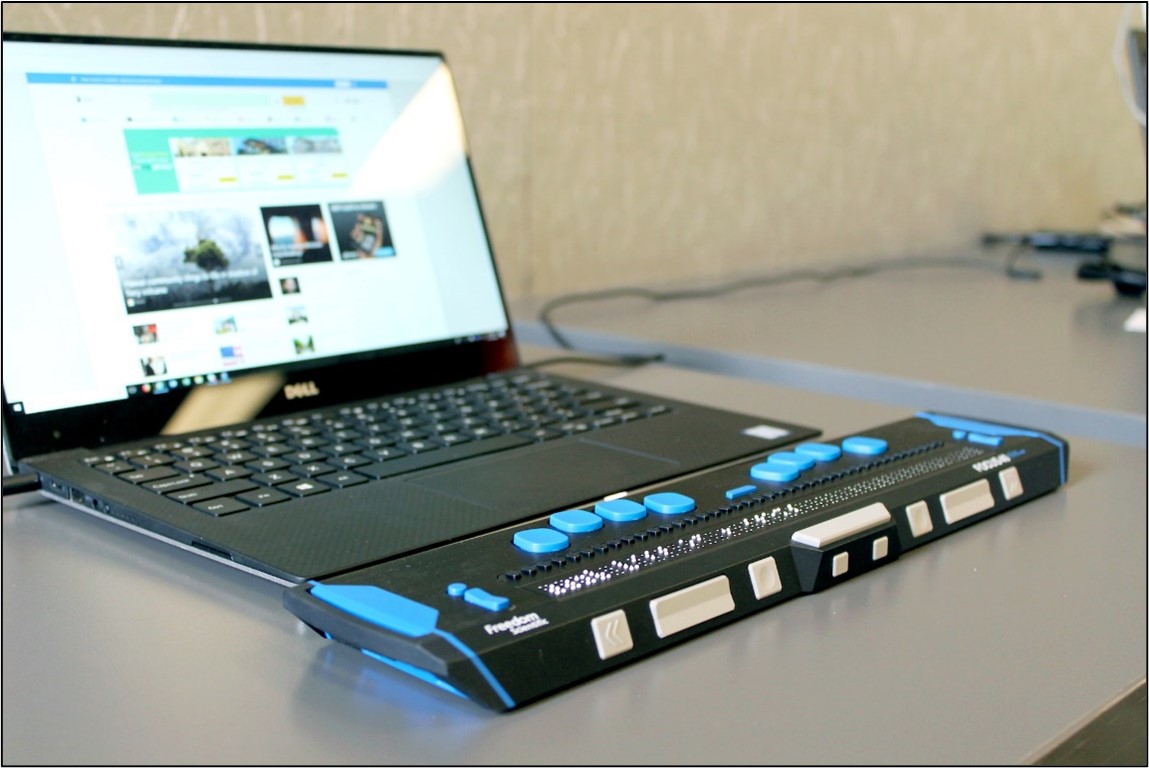
Domestic Appliances & Accessibility
Accessibility of electrical appliances
In August, ANEC replied to a questionnaire on future work in IEC/TC 59/WG11 ‘Performance of household and similar electrical appliances – Accessibility’. The questionnaire was launched as there is currently no work item being undertaken in WG 11. So far, the WG has published two standards: IEC/TS 62835:2015 ‘Electric toasters for household and similar use – Methods and measurements for improving accessibility’ and IEC 63008:2020 ‘Household and similar electrical appliances - Accessibility of control elements, doors, lids, drawers and handles’.
In our reply, we re-iterated accessibility and usability of household appliances are important issues for consumers and that standardisation can make a valuable contribution to both.
We stressed that more needs to be done to make household appliances more accessible for people with disabilities. The touch screens on ovens, thermostats, washing machines and other appliances are especially awkward for people with visual impairments, who cannot see the screen and so have no idea what to select.
Alternative operation through speech activation and/or via a companion app could be helpful and increase the possibility for use by more people. Nevertheless, speech activation will be useful for the visually impaired only if it is not needed to see a screen, and a companion app will be sufficient only if it is accessible.

Sustainability
SmartLiving EPC
On 19 & 20 July, ANEC participated in the kick-off meeting of the SmartLiving EPC project, hosted in Thessaloniki, Greece. Spanning three years, the project will ensure that the next generation of energy performance assessment and certification schemes will help achieve climate neutrality of the building stock by 2050.
The consortium is funded by the European research programme, HORIZON 2021, as part of the call for Efficient, sustainable and inclusive energy use. The 16 partners of the consortium will work together to deliver a new certificate scheme, based on existing European standards and standards to be developed. It will also extend the scope of the certificates to non-energy related aspects, such as water consumption and noise pollution. We believe it key that energy performance assessment and certification schemes work with non-energy performance data linked to the building’s life cycle, as together they can improve health and welfare.
ANEC will participate in tasks relating to standardisation, coordinate exchanges with similar projects, and disseminate results to CEN-CENELEC and ETSI.

ANEC Sustainability WG meets on use of LCA & packaging waste
Members of the ANEC Sustainability WG met online on 9 June to discuss the ANEC position on environmental footprint and substantiation of green claims (https://bit.ly/3Av7ulP), as well as the benefits and limitations of Lifecycle Analysis (LCA) in the context of environmental assessment of consumer products. ICRT joined the meeting and presented its approach to sustainability, streamlined LCA projects and a full LCA project on shopping bags.
The Sustainability WG met again on 6 July to discuss packaging & packaging waste, and next steps further to our paper, “ANEC position on the Review of EU requirements for packaging and other measures to prevent packaging waste” (https://bit.ly/3R27oJC). Our Portuguese expert presented a study on the LCA of shopping containers undertaken by Euroconsumers (https://bit.ly/3wFt06m), and RethinkPlasticsAlliance gave an overview of the campaign “We Choose Reuse” (https://bit.ly/3wF9nvd) as well as their view on the revision of the Packaging Directive.
Communication on sustainability of construction works
ANEC submitted a Not-Favourable Opinion in the Formal Vote on FprEN 17672 ‘Sustainability of construction works - Environmental product declarations - Horizontal rules for business-to-consumer communication’ which closed on 11 August. Disappointingly, the standard was adopted, despite this opposition from the consumer voice in standardisation.
We do not think the standard, drafted by CEN/TC 350 ‘Sustainability of construction works’, provides for provision of reliable, comparable or clear information to consumers. This follows our long-standing opposition to B2C communication based on Environmental Performance Declarations (EPDs), and builds on the ANEC commentary, ‘Sustainability in the construction sector. a consumer perspective on relevant standards and initiatives' (https://bit.ly/3PZfJwj).

Circumvention - vacuum cleaners
Within the framework of CENELEC/TC 59X ‘Material efficiency for household and electronical appliances’, ANEC has been active in work to combat the circumvention of standards on vacuum cleaners. This includes finding actual or potential means of circumvention, loopholes in existing standards and possible solutions.
Priorities for 2022 focus on addressing loopholes identified in previous years, such as biased test conditions for the motor life-time test and airborne acoustical noise test. The risk of such flawed test conditions is that standardised testing procedures will not reflect real-life usage, thus leading consumers to believe their devices have better energy efficiency or performance than is true. ANEC highlighted the missing definition of maximum operational power for cordless appliances in IEC 62885-4, and limitation to intended use cases, as opposed to real use cases. Both would be detrimental to consumers as real runtime would be shorter than the claimed runtime, and real power consumption higher than that claimed in the tests.

Batteries for cordless cleaners
As batteries are central to discussions on the ecodesign of domestic appliances, CENELEC TC 59X/WG6 on vacuum cleaners has decided to join forces with the international committee IEC/TC 59/SC 59F/JWG10 ‘Battery-related items for cordless surface cleaning appliances’. The topic is relevant to consumers as cordless appliances have a growing share of the market, with battery lifetime and runtime essential properties the device.
ANEC has joined the work to ensure the consumer view is heard in discussions on recharging provisions and lifetime calculations.

Digital Society
SReq on cybersecurity agreed
In response to the campaign of the consumer movement on the cyber-dangers of connected toys and products for children (such as Cayla, the “spying doll”), started in 2016, the EC last year adopted a delegated act on cybersecurity & privacy under the Radio Equipment Directive (RED). The obligations for certain categories of connected products to be secure apply from 1 August 2024. The RED and linked delegated act make use of Harmonised Standards which will have to be developed to provide presumption of conformity with the legal requirements.
In parallel to the writing of the legislation, the EC published a draft SReq for Harmonised Standards to support the new essential requirements for cybersecurity. This was discussed by the ESOs and interested stakeholders. We sent comments to the EC, which were taken into account, but were less successful in influencing the positions of the ESOs.
The draft SReq, reflecting many of our comments, was presented by the EC to the Committee on Standards last year and went to public consultation. It was subsequently revised by the EC and approved by the Member States in the Committee on Standards in July 2022, a move we welcomed.
We trust CEN-CENELEC will accept the SReq. The SReq was not simultaneously addressed to ETSI as non-European entities can vote on the adoption of ETSI standards, and cybersecurity is geopolitically sensitive. This is one of the rationales behind the EC proposal to amend the Standardisation Regulation (see the first story in this newsletter).

Draft SReq on AI
The EC has launched a pre-consultation on a draft SReq on Artificial Intelligence (AI).
As the AI Act is still under approval by the European Parliament and Council, the request is for European Standards (but not Harmonised Standards yet). The SReq is expected to be amended by the EC when the AI Act is adopted in order to request CEN, CENELEC and ETSI to develop Harmonised Standards to support the Act. Future Harmonised Standards should also build on the work done in response to this SReq.
Although the draft SReq answers some of the concerns we expressed previously about the role of International Standards, and the involvement of consumers (and civil society) in the standardisation process, we continue to be worried about the SReq being issued while the AI Act is still under discussion by the co-legislators.
Many definitions and requirements could change during the legislative process making the standards potentially out-of-scope and in need of complete redrafting to become Harmonised Standards. In addition, publication of the standards could put pressure on the co-legislators not to change the AI Act, in contravention of the EU democratic principles of decision making. ANEC has already expressed concerns (https://bit.ly/3RkR7PH) about the use of standards to implement fundamental rights.
We believe the text of the SReq needs to be strengthened to more accurately describe what is required with regard to EU values and interests, also noting the high numbers of non-EU bodies and companies active in the ESOs. We also stress that dedicated resources are needed to support the participation of underrepresented stakeholders in standardisation to make it effective. Finally, we think the standards need to be fit for purpose and anticipate reasonably foreseeable use.

ANEC wants tough Cyber-Resilience Act
The strategy of “a Europe Fit for a Digital Age” needs new legislation to defend the EU against cyberattacks. A European Cyber-Resilience Act (CRA) is in the making.
Tests by consumer organisations in recent years haves exposed the flawed cybersecurity of digital products marketed within the EU. The risks are increasing with the plethora of digital products and services circling the consumer, irrespective of their ability to consent or upgrade the device, or defend their privacy, data and finances.
ANEC participated in the EC’s impact assessment workshops focusing on the scope, security requirements, conformity assessment and risk categorisation of products and services. In May, we responded to the EC public consultation on the cybersecurity of digital products and ancillary services. Our experts made valuable contributions to the CRA initiative. The full details can be found at http://bitly.ws/sbfZ. In June and July, we remained in dialogue with DG CNECT, with our call for mandatory horizontal cybersecurity requirements for hardware, software, services and ancillary services, wired and wireless, embedded and non-embedded digital products, with security by default and by design.
Adoption of the CRA is expected to take place in mid-September 2022.

Services
ISO Standard on e-commerce
The revision of ISO 10008 ‘Quality management — Customer satisfaction — Guidance for business-to-consumer electronic commerce transactions’ was approved in June with all votes in favour.
ANEC contributed to the work with our expert representing Consumers International (CI) and ANEC. We are satisfied with the improvements made in the revision. Our voice was key in the provisions of the standard on services, accessibility, vulnerability, safety, data protection, the online marketplace and Artificial Intelligence.

Traffic & Mobility
Traffic & Mobility WG meets
The Traffic & Mobility WG met virtually on 27 & 28 June. Our experts reviewed achievements and upcoming challenges in standardisation work in the fields of automated and connected mobility, pedestrian protection, protection of children in vehicles, cycling and more.
Detailed discussions were held on the topic of children left in cars, and the safe transportation of children in buses and coaches, as well as on the use of sleep bags in combination with child car seats. The WG received updates on bicycles & EPACs, Intelligent Transport Systems, and batteries. Members also had the opportunity to share national news, such as an upcoming project on second-hand child car seats in Portugal, and the results of a study on bicycle seats and helmets in the Netherlands.

News from ANEC member countries
Denmark
Suspected endocrine disruptors found in detergents and all-purpose cleaners
The Danish Consumer Council’s THINK Chemicals analysed 20 laundry detergents for white clothes. Twelve of the 20 did not contain unwanted chemicals, but some contained allergenic substances or suspected endocrine disruptors. Almost all of the best 12 bore an eco-label or similar. For more, please go to https://bit.ly/3e0GR0x.
A separate test carried out by our Danish colleagues on 36 all-purpose cleaners found most were environmentally-friendly, although some did contain suspected endocrine disruptors. For more, go to https://bit.ly/3pUHlYT.
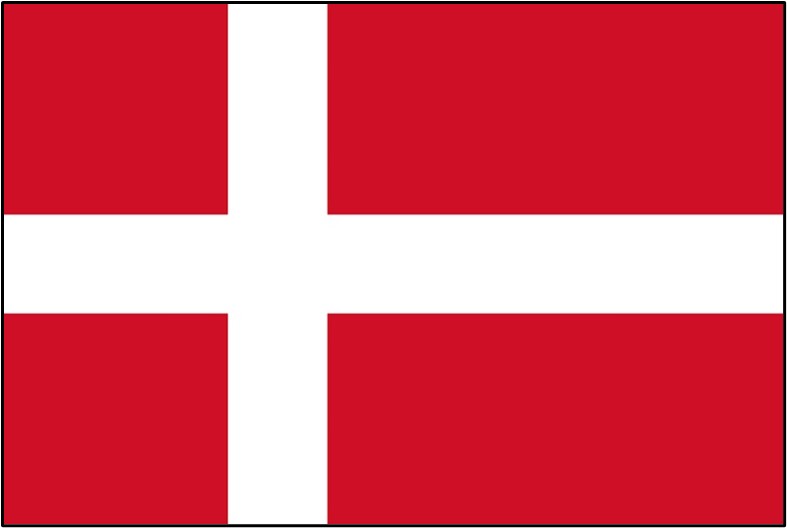
Romania
InfoCons has launched the Consumers Protection project (https://consumers-protection.org) which aims to provide up-to-date emergency numbers for all countries.
These emergency numbers can be found through the website, or through free applications downloadable from the Google Play store, Apple app store and Huawei app gallery. Economic or societal operators have the option to display a Unique Information Plate giving the same information, accessible to consumers through a QR code.
Stephen Russell, ANEC Director-General, congratulated Sorin Mierlea, InfoCons President and the Romanian member of ANEC, on the initiative which is the first initiative to provide global access to emergency numbers.

| List of meetings 2022 |
For comments or if you wish to write an article for the ANEC Newsletter, please contact: Marijana ANTAROROVA (This email address is being protected from spambots. You need JavaScript enabled to view it.).


